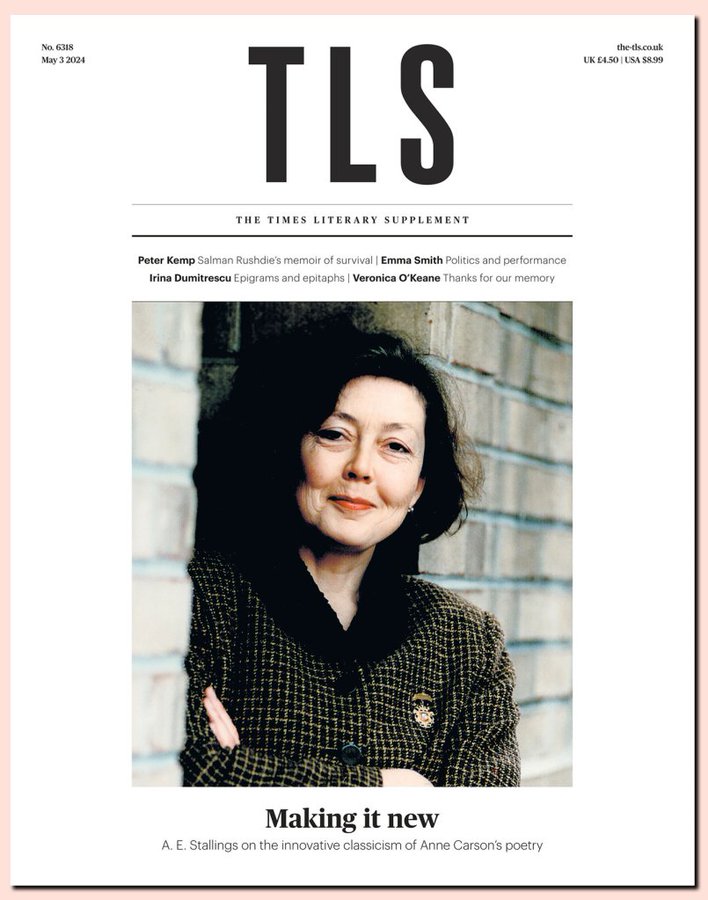
Times Literary Supplement (May 1, 2024): The latest issue features ‘Making it New’ – A.E. Stallings on the innovative classicism of Anne Carson’s poetry; Salman Rushdie’s memoir of survival; Politics and performance and more…

Times Literary Supplement (May 1, 2024): The latest issue features ‘Making it New’ – A.E. Stallings on the innovative classicism of Anne Carson’s poetry; Salman Rushdie’s memoir of survival; Politics and performance and more…

Times Literary Supplement (April 24, 2024): The latest issue features ‘The Mormon Conquest’ – Seth Perry on a people of the book; Is ‘green growth’ a mirage; Virginia Woolf’s rural retreat; China’s Shakespeare…


THE NEW YORK TIMES BOOK REVIEW (April 20, 2024): The latest issue features….
In “The Anxious Generation,” Jonathan Haidt says we’re failing children — and takes a firm stand against tech.

By Tracy Dennis-Tiwary
THE ANXIOUS GENERATION: How the Great Rewiring of Childhood Is Causing an Epidemic of Mental Illness, by Jonathan Haidt
Inside the book conservation lab at the Metropolitan Museum of Art.
By Molly Young
Not every workplace features a guillotine. At a book conservation lab tucked beneath the first floor of the Metropolitan Museum of Art, the office guillotine might as well be a water cooler or a file cabinet for all that it fazes the staff. “We have a lot of violent equipment,” said Mindell Dubansky, who heads the Sherman Fairchild Center for Book Conservation.
In “Muse of Fire,” Michael Korda depicts the lives and passions of the soldier poets whose verse provided a view into the carnage of World War I.

Kenyon Review – April 19, 2024: The 2024 Spring issue features Beth Bachmann’s 2023 Short Fiction Contest-winning story, chosen by judge Danielle Evans; fiction by Nick Almeida and Lauren Cassani Davis; poetry by Fatima Jafar and Marcus Wicker; and a folio of Literary Curiosities, which features work by Jennifer Chang, J. D. Debris, Summer Farah, Eliza Gilbert, Christine Imperial, Phoebe Peter Oathout, Tega Oghenechovwen, Maya C. Popa, and more. The cover art is a detail of Chitra Ganesh’s City Inside Her, from the artist’s Architects of the Future portfolio.
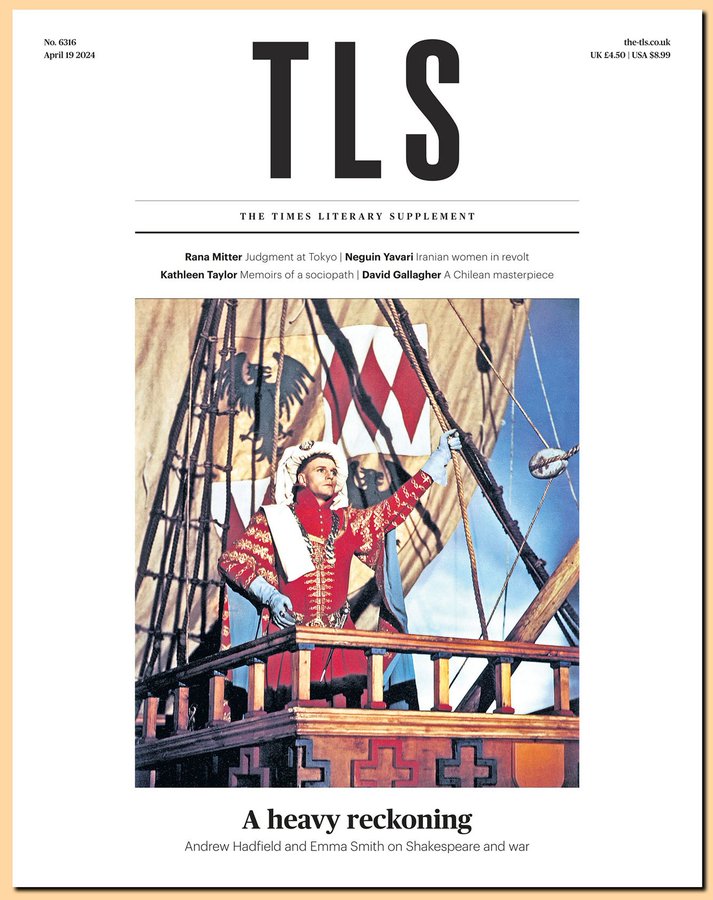
Times Literary Supplement (April 17, 2024): The latest issue features ‘A Heavy Reckoning’ – Shakespeare and War’; Judgment at Tokyo; Iranian women in revolt; Memoirs of a sociopath and A Chilean masterpiece…


THE NEW YORK TIMES BOOK REVIEW (April 12, 2024): The latest issue features the cold-sweat-inducing premise of the two books on our cover this week, Annie Jacobsen’s “Nuclear War” and Sarah Scoles’s “Countdown.”
In “Nuclear War” and “Countdown,” Annie Jacobsen and Sarah Scoles talk to the people whose job it is to prepare for atomic conflict.
In Lionel Shriver’s new novel, judging intelligence and competence is a form of bigotry.
Richard Goodwin, an adviser to presidents, “was more interested in shaping history,” she says, “and I in figuring out how history was shaped.” Their bond is at the heart of her new book, “An Unfinished Love Story: A Personal History of the 1960s.”
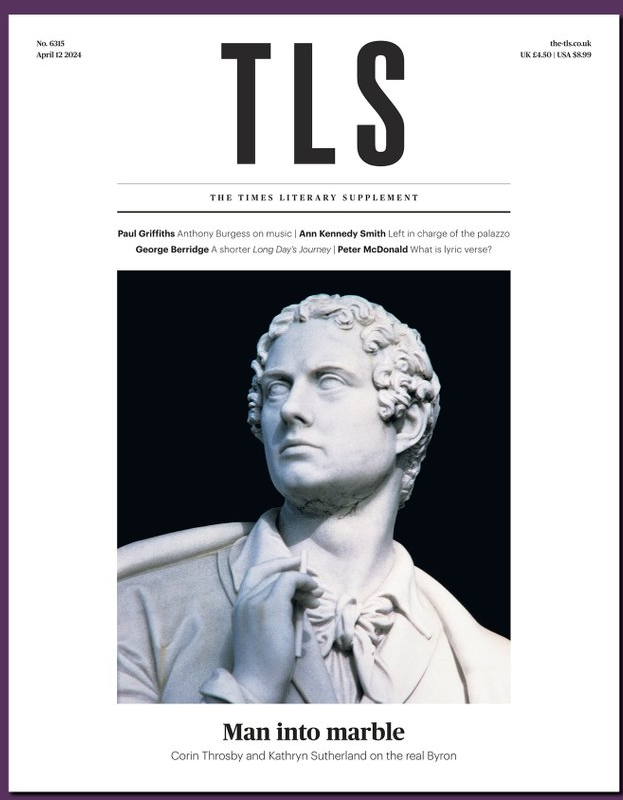
Times Literary Supplement (April 10, 2024): The latest issue features ‘Man Into Marble’ – Corin Throsby and Kathryn Sutherland on the real Byron; Anthony Burgess on music; Left in charge at the palazzo; Revolutionary Russia; A shorter Long Day’s Journey and What is lyric verse?…
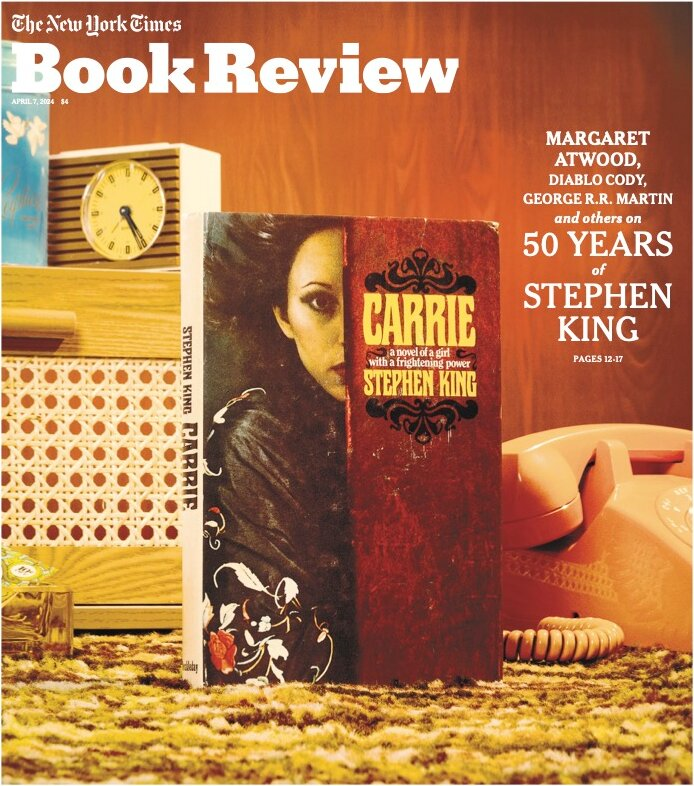

THE NEW YORK TIMES BOOK REVIEW (April 5, 2024): The latest issue features Stephen King’s first novel, “Carrie,” published 50 years ago. The Book Review editors weren’t sure what to do with it, so they handed it to their mystery columnist, Newgate Callendar. He called it “brilliant” but conceded, “Maybe, strictly speaking, it is not a mystery.” Still, he added, “That this is a first novel is amazing. King writes with the kind of surety normally associated only with veteran writers.”

“Carrie” was published in 1974. Margaret Atwood explains its enduring appeal.
By Margaret Atwood
Stephen King’s “Carrie” burst upon an astonished world in 1974. It made King’s career. It has sold millions, made millions, inspired four films and passed from generation to generation. It was, and continues to be, a phenomenon.
“Carrie” was King’s first published novel. He started it as a men’s magazine piece, which was peculiar in itself: What made him think that a bunch of guys intent (as King puts it) on looking at pictures of cheerleaders who had somehow forgotten to put their underpants on would be riveted by an opening scene featuring gobs of menstrual blood? This is, to put it mildly, not the world’s sexiest topic, and especially not for young men. Failing to convince himself, King scrunched up the few pages he’d written and tossed them into the garbage.
As “Carrie” turns 50, George R.R. Martin, Sissy Spacek, Tom Hanks, the Archbishop of Canterbury and others recall the powerful impact the writer’s work has had on their lives.

In the late ’70s the image of Carrie covered in blood at the high school dance was already part of the national narrative — in a fun way. Struggling to afford the rent and the diapers while navigating those first years of a creative journey in the big city, I had not seen the movie nor read the book. Then a copy of “The Stand” was being gobbled up by our gang — read in a fever pitch on every subway ride and first thing in the morning. Once done, the copy was passed along to the next pair of eyes and promptly devoured.
Stanford University Press (April 5, 2024): Jonathan S. Blake and Nils Gilman introduce their new book Children of a Modest Star: Planetary Thinking for an Age of Crises.
A clear-eyed and urgent vision for a new system of political governance to manage planetary issues and their local consequences.
Deadly viruses, climate-changing carbon molecules, and harmful pollutants cross the globe unimpeded by national borders. While the consequences of these flows range across scales, from the planetary to the local, the authority and resources to manage them are concentrated mainly at one level: the nation-state. This profound mismatch between the scale of planetary challenges and the institutions tasked with governing them is leading to cascading systemic failures.
Produced by Studio B. at the Berggruen Institute
Animation by Meysam Qaderi
Illustration by Akram Esmaili
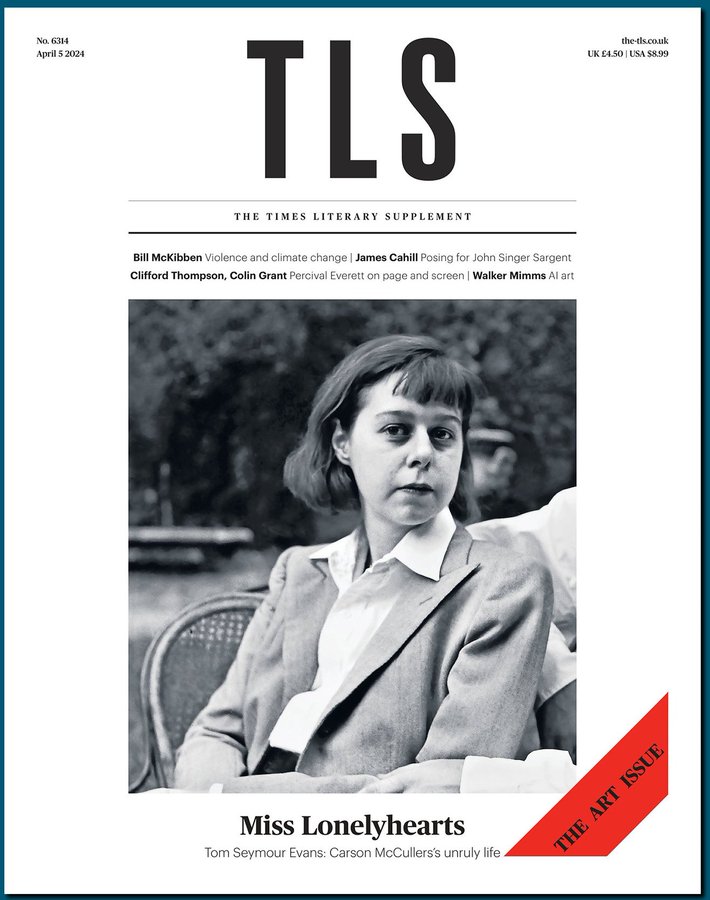
Times Literary Supplement (April 3, 2024): The ‘The Art Issue’ features ‘Miss Lonelyhearts’ – Tom Seymour Evans: Carson McCullers’s unruly life; Violence and Climate Change; Posing for John Singer Sargent and Huckleberry Jim – Mark Twain’s escaped slave wrests control of his story…
Carson McCullers: a novelist of the marginalized and ‘those struggling to understand who they are’
Mark Twain’s escaped slave wrests control of his story
Percival Everett’s wry, provocative novel on the publishing world brought to the screen
By Colin Grant